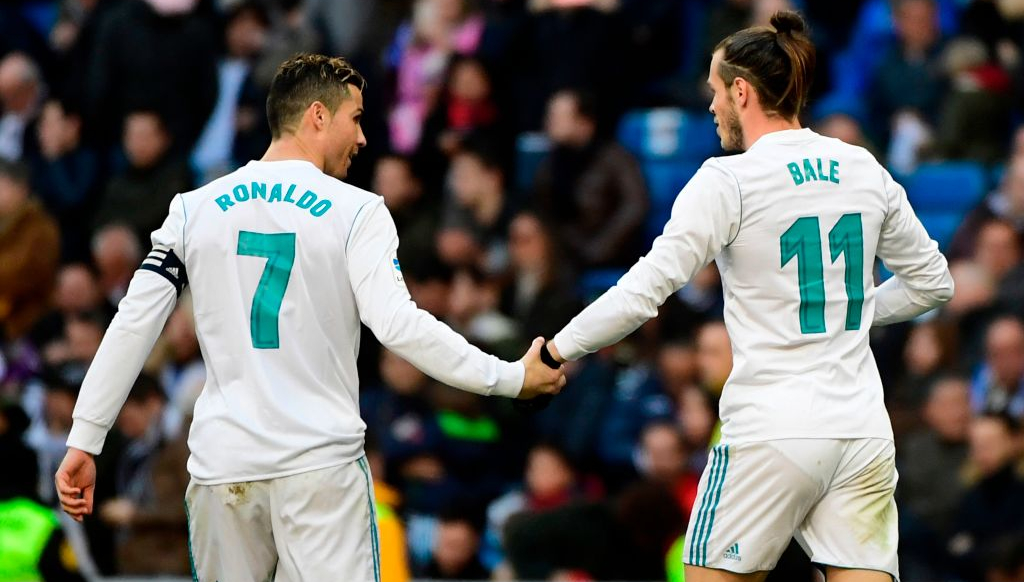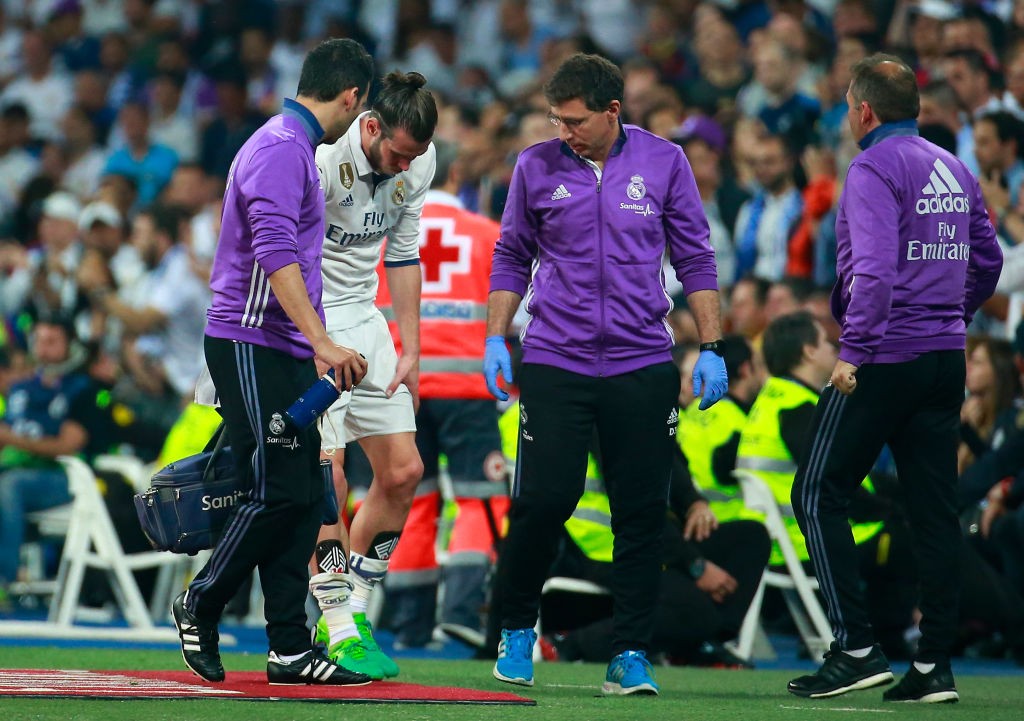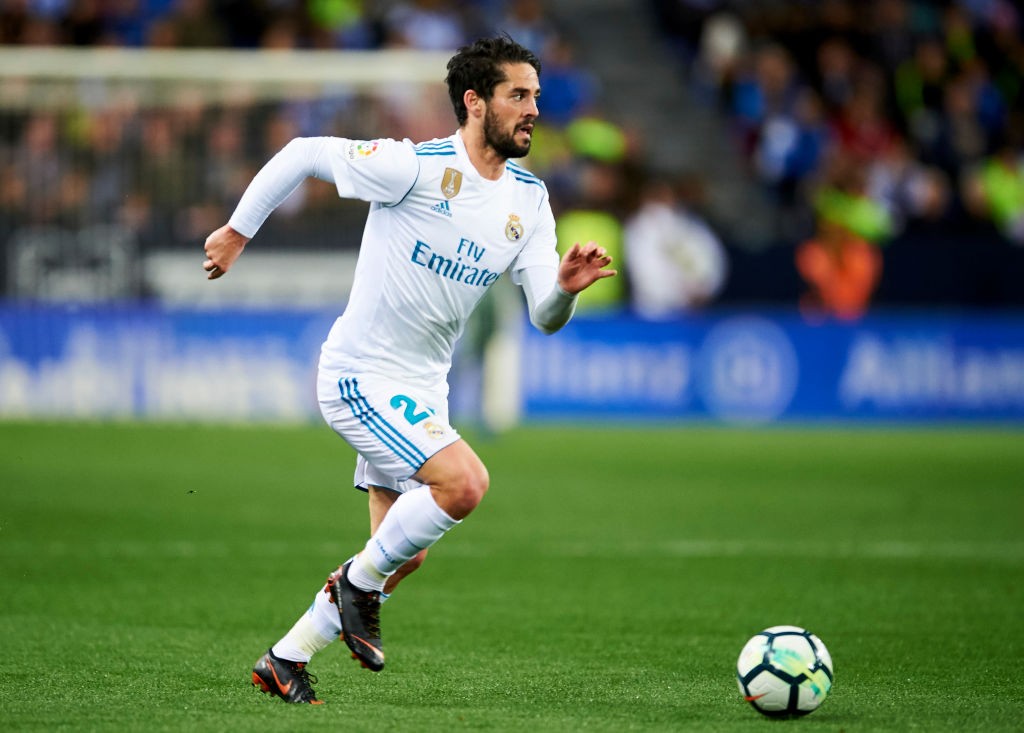
With shorts hoisted up revealing steel-rod muscle tissue rippling through his quads and calves, you’d be forgiven for thinking not much has changed at Real Madrid.
The players reported back for pre-season training last week ahead of their tour of the United States, which begins against Manchester United on Wednesday, and the scene was a familiar one as their star asset was put through his paces.
Only, the bulging biceps and hulking legs were not that of Cristiano Ronaldo but Gareth Bale instead.
The Welshman has not skipped leg day, or any other training day, over the summer because the 29-year-old is in phenomenal condition – and frankly he needs to be for what lies ahead.
With Ronaldo and his 50-goals-a-season package now in the black and white of Juventus, Bale is set to figuratively and, perhaps, literally assume the central role for Los Blancos.
And he’s going to need every ounce of those muscle fibres to carry Real and the weight of expectation this season. No pressure, then.
Madrid supporters are understandably apprehensive at the thought of Bale replacing Ronaldo. Not from a skillset perspective, but pure reliability.
RISKY INJURY RECORD
From the outside, both are two absolute machines but if you dip under the hood, one has proven mileage while the other struggles to run smoothly.
Since Bale joined from Tottenham in the summer of 2013, he has managed to start 25 or more La Liga games just once. Comparatively, Ronaldo in that same period was in the starting XI in all five seasons with the younger Bale hitting the 30 mark for just one campaign in 2014/15, while the Portuguese did so in all but his last two.
Status is a dictating factor of course, justification for that in the fact Ronaldo was never brought off the bench in any one of those five seasons.
However, injuries have punctured Bale at every turn. Counting across all competitions, according to Transfermarkt.com, Ronaldo never missed games into double figures because of injury or illness from 2013/14, whereas that’s been the case for Bale in three from five.

The Welshman was born to run and run fast, yet it’s precisely that gift which has lacerated his impact with 10 muscle-related injuries in five years.
Granted, he’s not been unavailable once in 2018 and that does point to promise. You will forgive Real fans for their collective anxiety ahead of the new season given his past, though.
IMPACT FROM THE BENCH
Paradoxically, his improved fitness could actually present another problem for Madrid boss Julen Lopetegui. If you examine the squad, there’s an unsettling lack of cover in the attacking areas.
Isco will profit most from Ronaldo’s exit and Lopetegui’s arrival, as the playmaker will adopt a key role next season, to the extent the new boss has ruled out a move for Chelsea’s Eden Hazard.
With a reliance on Bale as well, that’s two players with 17 substitute appearances between them in the league last season now elevated to consistent first-team status.
It leaves just, Borja Mayoral, Marco Asensio and the massively-untested-teenager Vinicius Junior as primary forward options from the bench. Asensio and Isco could even start either side of Bale and swap out Karim Benzema, but the 30-year-old’s paltry six goals in all competitions last season point to a sharp and worrying decline.
Granted, quality in the ilk of Bale and Isco being left out of any starting line-up is borderline sacrilege but then you can’t argue with the results after the former-mentioned winger came on and scored twice in the Champions League final in May.

Who will Lopetegui turn to if no new star arrives before the window shuts?
LOPETEGUI’S STYLE
Of course, much will actually depend on the style of football Lopetegui is planning to employ. If we use the national team as a litmus test for what to expect, then Isco will be handed a free role within a possession-heavy structure which is built from the defence.
Marcelo and Dani Carvajal will provide width from the full-back slots, with Luka Modric and Toni Kroos serving as a creative hub and the juggernaut screen of Casemiro to protect the back four.
Bale, though, is primarily a counter-attacking weapon. It remains to be seen how the Welshman’s style would mesh with Lopetegui’s shifting philosophy and whether he could flourish either as an inverted winger on the right or even centrally in a 4-3-3 or maybe a 4-2-3-1.
Under Zidane, Real expertly soaked up pressure, waited for a mistake then like ripping up a scab, attacked the wound with a swiftness through the likes of Bale.
Slower in the transition, it remains to be seen if he carry the same effect under Lopetegui.
PRIME FORCE
Adaptability is the question mark but theoretically at least, durability wise, Bale should peak this season.
At 29-years old, he is entering his physical prime. If Real are searching for a natural successor to Ronaldo, then the numbers point to him.
According to Opta, Bale had a hand in 27 Madrid goals (21 goals and six assists in 39 meetings) in all competitions last season. Naturally, only Ronaldo fared better (52 in 55 games, 44 goals and eight assists).
And without the Portuguese in the side, it opens up an opportunity for Bale. He can bloat his statistics with penalties and free-kicks – there’s an argument to be made he possesses a better technique than Ronaldo from dead-ball situations – and the vacated space can literally be filled by the Welshman on the pitch.
You see, Real no longer require an asymmetrical three-man attack to cater for the former Man United forward.
Benzema’s self-sacrifice to drop in and make runs in the channels to open gaps for Ronaldo saw Bale lose out as he was often isolated in an unbalanced front trio.
Yet under Rafael Benitez, we were given a glimpse of what he can produce when operating more centrally.
Although not a traditional No10 in the sense he’s far from a one-touch artist, Bale ripped apart defences by accelerating into central gaps with piercing pace and then unleashing strikes which generate raw power with little backlift.
If he is allowed to develop further in this role, one he’s said in the past is a preference, Bale can emerge as the match-winner Real require.
Isco in a free role on the left, Asensio on the right, Benzema up front and a prime Bale as the No10 in a 4-2-3-1 is a frightening prospect for any opposition defence.
There’s no doubting Bale’s talent and ability to step into the shoes of Ronaldo. It’s just a question of his body allowing him to do so.
Judging by his presence in pre-season, he certainly looks the part at least.